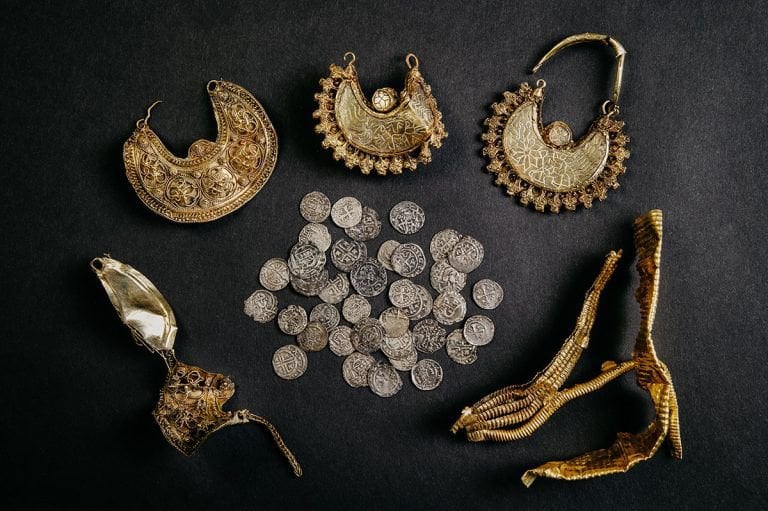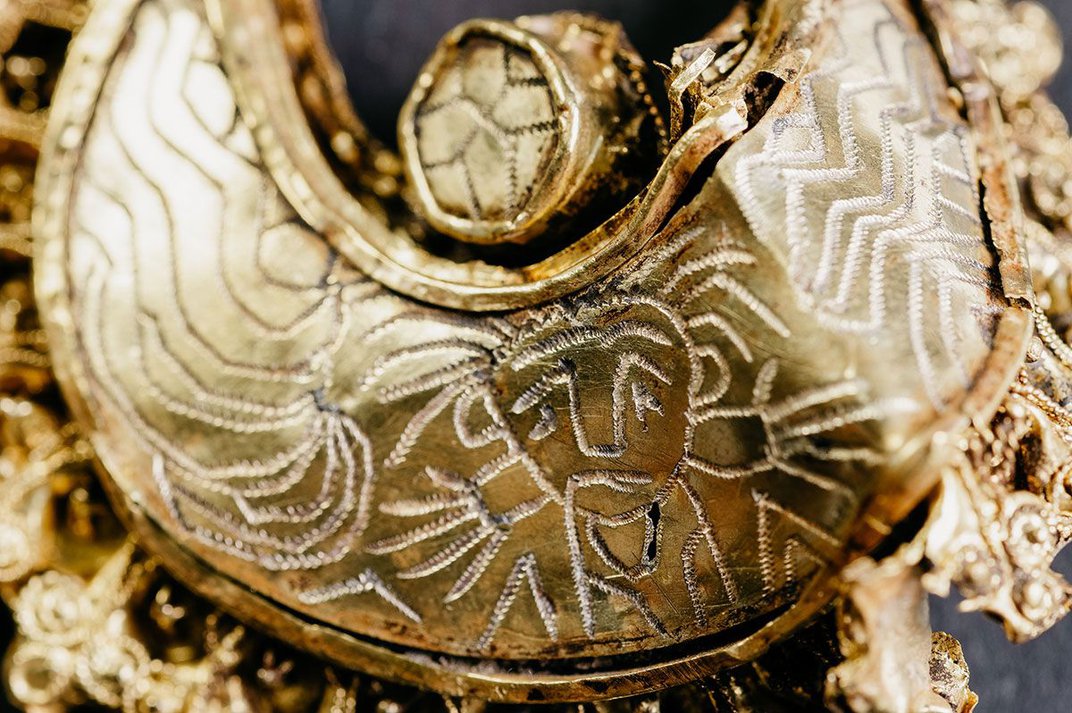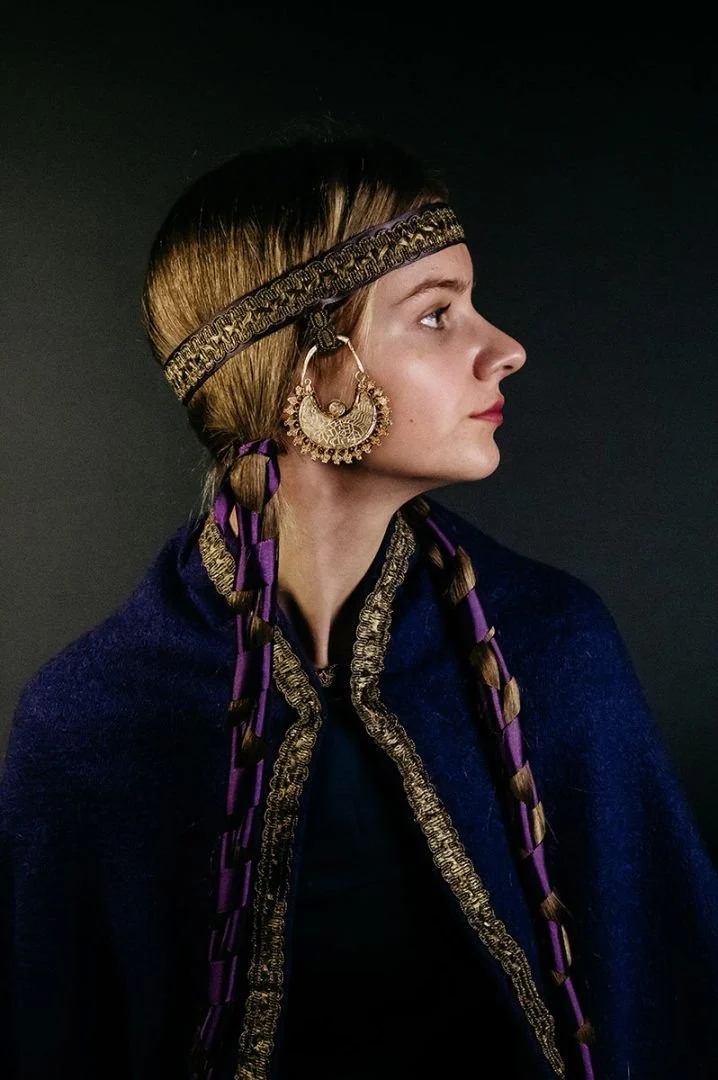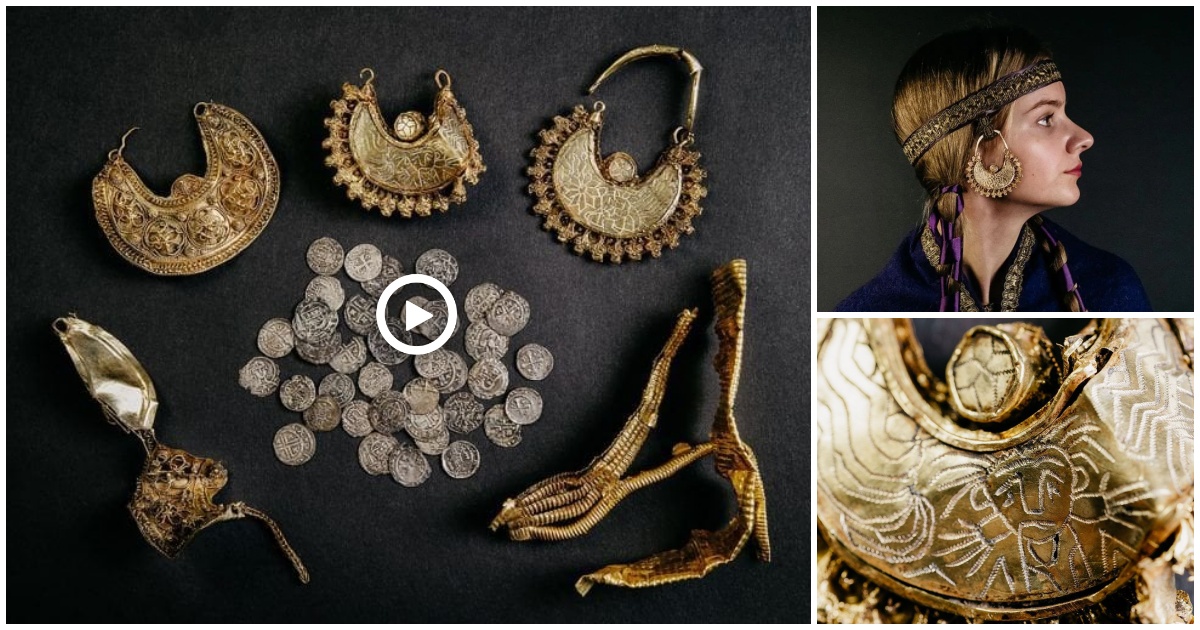Silver Coins and 1,000-Year-Old Gold Earrings Discovered in the Netherlands
The entire treasure consists of four ear pendants, 39 silver pieces, and two strips of gold leaf. Fleur Schinning / Archeology West-Friesland
Lorenzo Ruijter, a Dutch treasure hunter, had been unsuccessfully combing the ground for over three hours when his metal detector finally went off. He began digging and was surprised to find 39 silver pieces, two strips of gold leaf, and four gold earrings.
Ruijter discovered this astonishing discovery in 2021 at Hoogwoud, a little town north of Amsterdam. But he’s had to keep his wealth hidden for the past two years while experts at the Dutch National Museum of Antiquities analyzed and dated the objects.
Ruijter’s treasure is possibly 1,000 years old, according to the museum. Based on the dates of the newest coins, museum experts believe the treasure was buried between 1200 and 1250 C.E. The jewelry was already 200 years old at the time, implying that it was someone’s “expensive and cherished possession,” according to the museum in a statement translated by Google Translate.
One pair of earrings features an image of Jesus Christ. Fleur Schinning / Archeology West-Friesland
“It was very special discovering something this valuable; I really can’t describe it,” Reuijter, 27, tells Reuters’ Charlotte Campenhout. “I never expected to discover anything like this.”
Researchers were able to learn more about the medieval artefacts after cleaning them. According to the museum, the four earrings, for example, are from the 11th century. They’re about two inches (five cm) wide and shaped like crescent moons. One pair has an engraving of Jesus Christ’s head encircled by sun rays, while the other has thin, twisted threads composed of gold balls, a kind of embellishment known as filigree. Because of the tiny suspension brackets on the earrings
They were most likely worn on a headband or cowl rather than in pierced ears because they are only adorned on one side.
“Comparable gold earrings have only been found three times in the Netherlands,” according to the museum’s statement.
Small textile threads were discovered attached to the two strips of gold leaf, indicating that they were most likely worn on the waistband or edge of a piece of clothing.
They also discovered little fragments of textile among the 39 silver coins, implying that they were once wrapped in a bag or piece of cloth. Among the coins are tokens from the Roman Catholic Diocese of Utrecht, as well as pennies from several Dutch counties and the German Empire. a few ofThey were created in 1247 or 1248 during William II’s reign.
A recreation of how the earrings would have been worn, possibly with a headband or hood. Archaeology in West-Friesland Fleur Schinning’s
While historians are aware of the treasure’s age, many questions remain unresolved. They have no idea who buried the items, or, perhaps more importantly, why.
Experts believe that someone wished to protect their most valuable belongings during a mid-13th century war between the Dutch regions of West Friesland and Holland. According to the London Times’ Bruno Waterfield, the treasure’s owner could have been a noblewoman fleeing the war.
Because the treasure was buried during the battle, it is “of great significance for the archaeology and history of North Holland and West Friesland—and even of national and international importance,” according to the report.
“, according to the museum’s statement.
Ruijter will eventually get to retain the treasure. But for the time being, he’s lending it to the museum, where it’ll be on exhibit until mid-June. It will be included in the museum’s temporary “The Year 1000” exhibition beginning in mid-October.
Hits: 0





